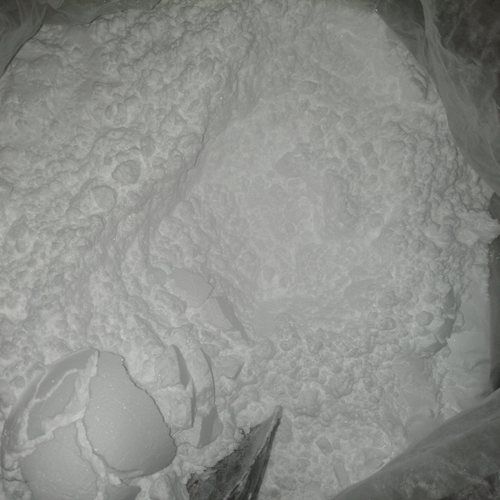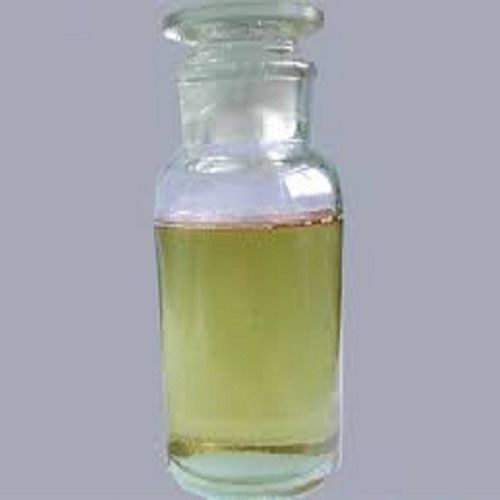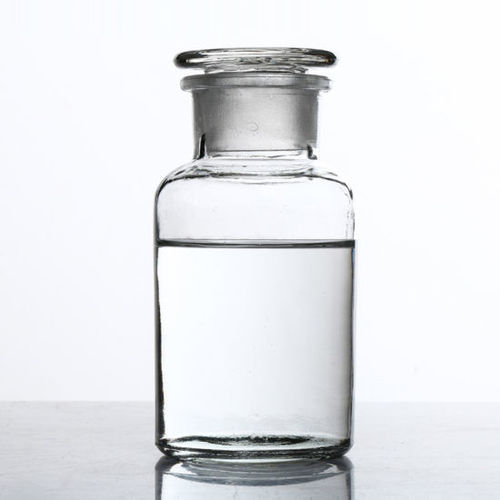Welcome to Our Company

2-Chlorobenzonitrile Liquid
Product Details:
- Solubility Water Soluble
- Storage Room Temperature
- Molecular Formula C7H4ClN
- Molecular Weight 139.57 Grams (g)
- Melting Point 40-42 degree centigrade.
- Density 1.23 Gram per cubic centimeter(g/cm3)
- Application Industrial
- Click to View more
X
2-Chlorobenzonitrile Liquid Price And Quantity
- 1 Kilograms
2-Chlorobenzonitrile Liquid Product Specifications
- Water Soluble
- C7H4ClN
- Room Temperature
- 139.57 Grams (g)
- 40-42 degree centigrade.
- Industrial
- Liquid
- 1.23 Gram per cubic centimeter(g/cm3)
Product Description
White yellowish colored 2-Chlorobenzonitrile Liquid is used as suitable dyestuff intermediate. Its application can also be noticed during synthesis of different chemicals. Accessible in colorless form, this chemical is appreciated for its minimum 99% pure content. Melting point of this chemical ranges between 43 to 46 degree centigrade. Its molar mass is 137.5664. Standard of this liquid chemical has been checked as per its composition, stability of properties, possible toxic content and shelf life. This chemical is accessible at reasonable rate from us.
Uses of 2-Chlorobenzonitrile:
2-Chlorobenzonitrile, also known as o-chlorobenzonitrile, is a chemical compound with the molecular formula C7H4ClN. It is an aromatic nitrile that contains a benzene ring with a chlorine atom and a cyano group (CN) attached to it. This compound finds applications in various industries and research fields due to its unique chemical properties. Some common uses of 2-Chlorobenzonitrile include:
1. Chemical Intermediates: 2-Chlorobenzonitrile serves as a valuable intermediate in the synthesis of various organic compounds. It can be used as a starting material to produce a wide range of chemicals, including pharmaceuticals, agrochemicals, and specialty chemicals.
2. Pharmaceuticals: This compound can be used in the synthesis of pharmaceutical products and active pharmaceutical ingredients (APIs). It acts as a building block in the production of certain drugs and pharmaceutical compounds.
3. Agrochemicals: 2-Chlorobenzonitrile is used in the development of agrochemicals, such as herbicides and fungicides. These chemicals play a crucial role in agriculture by controlling pests, we eds, and plant diseases.
4. Dyes and Pigments: It can be employed in the synthesis of dyes and pigments, contributing to the coloring of various products, such as textiles, plastics, and paints.
5. Chemical Research: Researchers may use 2-Chlorobenzonitrile as a reagent or precursor in laboratory experiments and organic synthesis to create novel compounds and study their properties.
6. Photographic Chemicals: It has applications in the manufacturing of photographic chemicals, which are used in the development of photographs and imaging processes.
7. Specialty Chemicals: 2-Chlorobenzonitrile may be utilized in the production of various specialty chemicals, which have specific applications in particular industries.
8. Analytical Chemistry: It can be used as a reference standard or calibration standard in analytical chemistry techniques, such as gas chromatography and mass spectrometry.
2-Chlorobenzonitrile Properties:
1. Molecular Weight: 139.57 g/mol
2. Physical State: 2-Chlorobenzonitrile exists as a solid at room temperature.
3. Melting Point: The melting point of 2-Chlorobenzonitrile is typically around 40-42 degree centigrade.
4. Boiling Point: The compound has a boiling point of approximately 219-220 degree centigrade.
5. Density: The density of 2-Chlorobenzonitrile is about 1.23 g/cm3.
6. Solubility: It is sparingly soluble in water but dissolves well in organic solvents such as ethanol, methanol, ether, and chloroform.
7. Chemical Formula: C7H4ClN
8. Molecular Structure: The compound has a benzene ring with a chlorine atom (Cl) and a cyano group (CN) attached to it.
9. Odor: 2-Chlorobenzonitrile has a distinct, aromatic odor.
10. Reactivity: As a nitrile, 2-Chlorobenzonitrile can undergo various chemical reactions, including nucleophilic substitution, reduction, and hydrolysis.
11. Toxicity: Like many organic compounds, 2-Chlorobenzonitrile should be handled with care as it may present hazards. It is considered toxic and can cause skin and eye irritation. Proper safety precautions and protective equipment should be used when working with this compound.
12. Applications: As mentioned earlier, 2-Chlorobenzonitrile is used as a chemical intermediate in the synthesis of pharmaceuticals, agrochemicals, dyes, pigments, and specialty chemicals.
It's important to note that the properties of chemical compounds can be influenced by factors such as temperature, pressure, and impurities. Therefore, the values provided here are typical and may vary slightly under different conditions. When handling 2-Chlorobenzonitrile or any chemical compound, it is essential to consult reliable safety data sheets (SDS) and follow proper handling and storage guidelines to ensure safe practices.
FAQ:
Q: What is the chemical structure of 2-Chlorobenzonitrile?
A: 2-Chlorobenzonitrile has the chemical structure C6H4ClCN. It consists of a benzene ring (C6H5) with a chlorine atom (Cl) and a cyano group (CN) attached to it.
Q: What are the common uses of 2-Chlorobenzonitrile?
A: 2-Chlorobenzonitrile is used as a chemical intermediate in the synthesis of various organic compounds, including pharmaceuticals, agrochemicals, dyes, pigments, and specialty chemicals. It also finds applications in the manufacturing of photographic chemicals and as a reference standard in analytical chemistry.
Q: Is 2-Chlorobenzonitrile hazardous?
A: Yes, This chemical compound is considered hazardous. It is toxic and may cause skin and eye irritation. Proper safety precautions, such as wearing appropriate protective equipment and working in a well-ventilated area, should be taken when handling this compound.
Q: What is the melting point of 2-Chlorobenzonitrile?
A: The melting point of 2-Chlorobenzonitrile is typically around 40-42 degree centigrade.
Q: How does 2-Chlorobenzonitrile react in chemical reactions?
A: 2-Chlorobenzonitrile can undergo various chemical reactions due to the presence of the cyano group (CN). Some common reactions include nucleophilic substitution, reduction, and hydrolysis.
Q: Is 2-Chlorobenzonitrile soluble in water?
A: This chemical compound is sparingly soluble in water but dissolves well in organic solvents such as ethanol, methanol, ether, and chloroform.
Q: What are the potential applications of 2-Chlorobenzonitrile in the pharmaceutical industry?
A: In the pharmaceutical industry, 2-Chlorobenzonitrile is used as a building block or intermediate in the synthesis of certain drugs and active pharmaceutical ingredients (APIs).
Q: How should 2-Chlorobenzonitrile be stored?
A: This chemical compound should be stored in a cool, dry, and well-ventilated area, away from direct sunlight and sources of heat. It should be kept in tightly sealed containers and away from incompatible materials.
Q: Can 2-Chlorobenzonitrile be used in agricultural products?
A: Yes, 2-Chlorobenzonitrile can be used in the development of agrochemicals, such as herbicides and fungicides, which are important for pest and disease control in agriculture.
Q: Is there any potential for 2-Chlorobenzonitrile to be used in research and laboratory experiments?
A: Yes, This chemical compound can be used as a reagent or precursor in laboratory experiments and organic synthesis to create novel compounds and study their properties in research settings. However, researchers should handle it with care due to its toxicity.
Enter Buying Requirement Details

 English
English Spanish
Spanish French
French German
German Italian
Italian Chinese (Simplified)
Chinese (Simplified) Japanese
Japanese Korean
Korean Arabic
Arabic Portuguese
Portuguese




